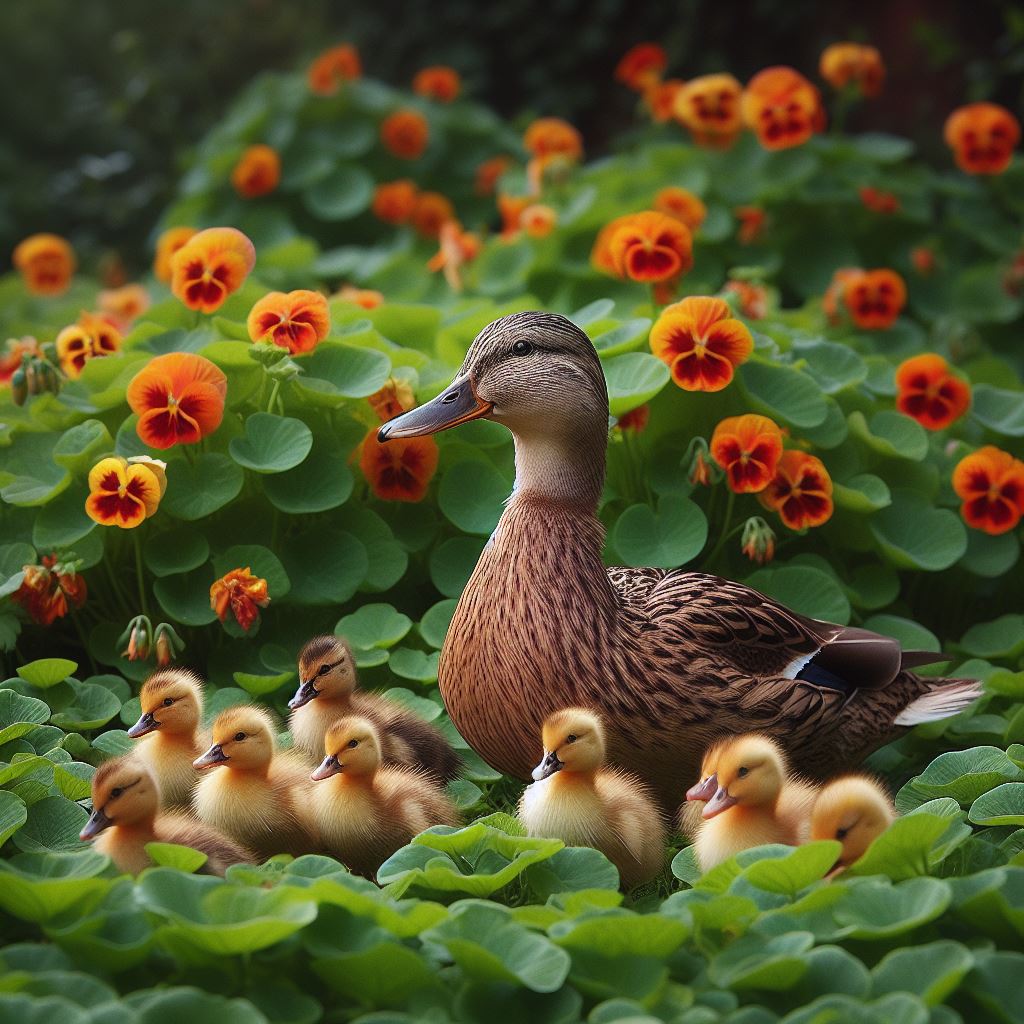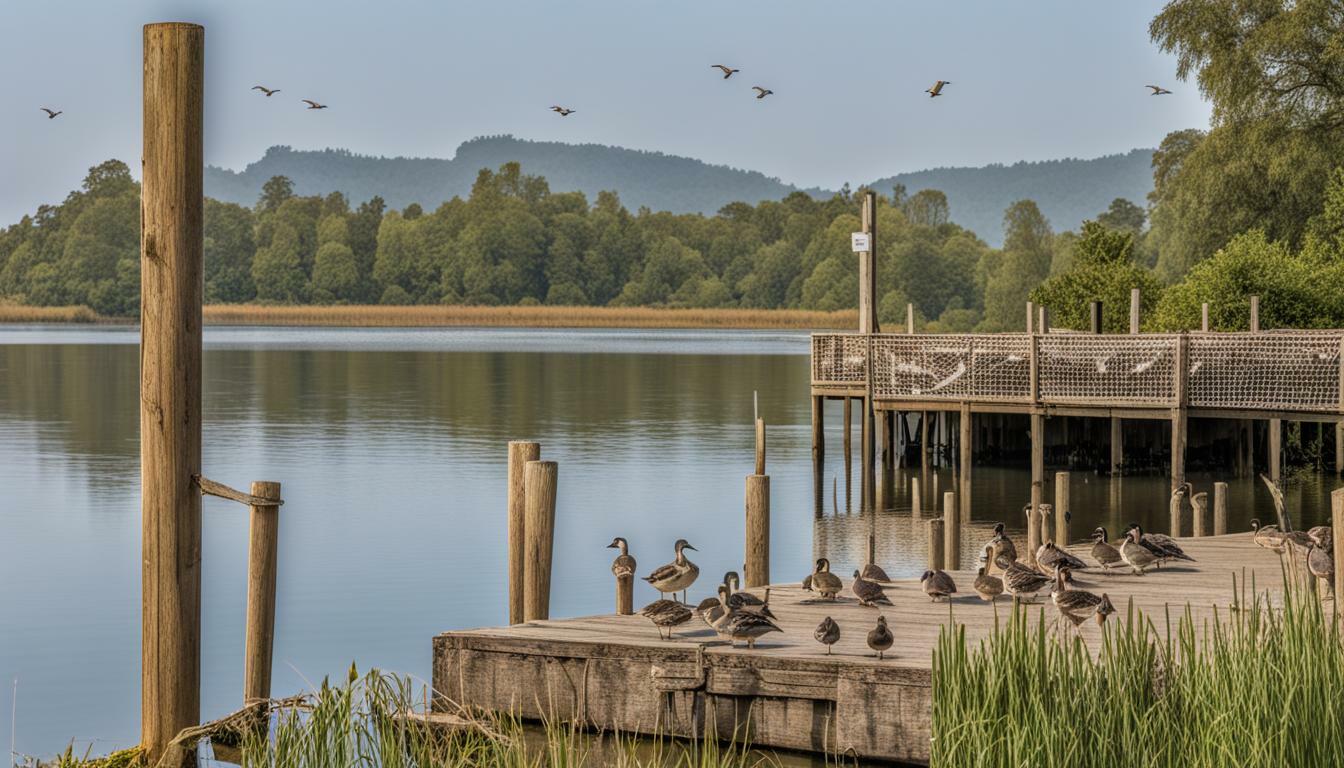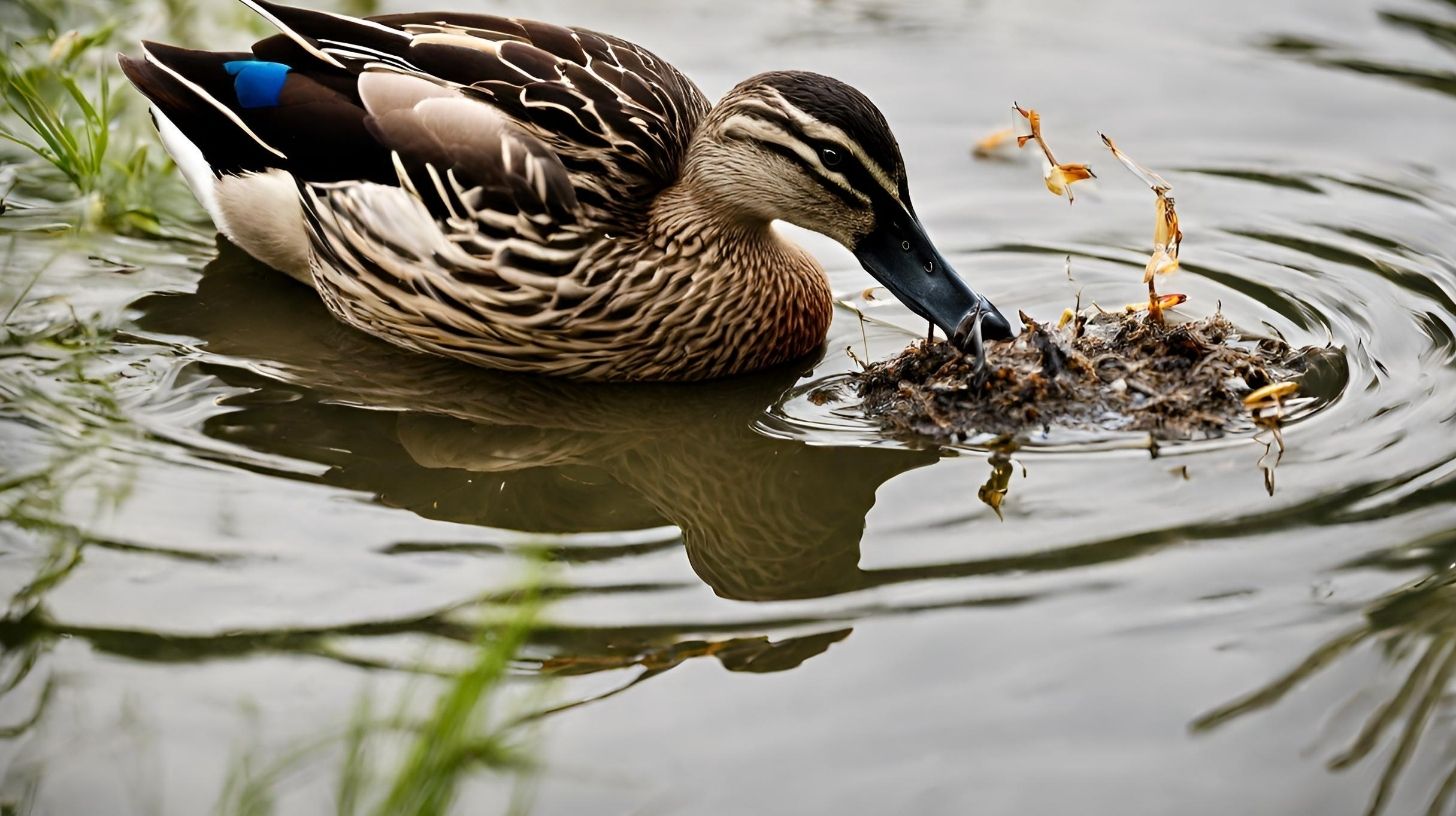Do Ducks Fly In The Rain? Unraveling the Mystery

Table of content:
- How Rain Could Potentially Affect Duck Flight
- Do Ducks Avoid Flying in the Rain?
- How Does Rain Actually Affect a Duck’s Flight?
- Special Duck Adaptations for Flying in Rain
- Why Would Ducks Ever Fly in the Rain?
- Can All Duck Species Fly Well in the Rain?
- Do Duck Feathers Get Waterlogged in the Rain?
- Do Ducks Fly Differently in the Rain?
- Can Ducks Fly in Thunderstorms and Hurricanes?
- The Fascinating Impacts of Rainy Weather on Duck Behavior
- Final Thoughts: Ducks Are Rainflight experts!
Have you ever looked up at the sky during a rainstorm and noticed ducks flying overhead? Or maybe you’ve seen ducks swimming around a pond while it was pouring rain. If so, you may have wondered: can ducks fly in the rain?
This is actually a fascinating question when you consider a duck’s biology and flying abilities. In this article, we’ll explore everything you need to know about whether or not ducks can and do fly in rainy conditions.
Before jumping into ducks and rain specifically, let’s look at some key facts about ducks in general:
- There are around 120 different species of ducks in the world. The most common in North America include mallards, wood ducks, blue-winged teal, and Canada geese.
- Duck species vary greatly in size, from the diminutive green-winged teal to the massive trumpeter swan.
- All ducks are waterfowl, meaning they frequent lakes, ponds, rivers, and other bodies of water. Some duck species are also quite comfortable on land.
- Ducks have specially adapted wings, feet, feathers, and other features that make them excellent swimmers and divers.
- While not the fastest or most agile fliers, most duck species are fully capable of flight. Mallards can fly at speeds up to 55 mph.
So in short, ducks are aquatic birds evolved for swimming, but they can also fly fairly well when needed. This brings us to how the mechanics of flight might be impacted by rainy weather.
How Rain Could Potentially Affect Duck Flight
At first glance, it seems reasonable to assume that rain would influence a duck’s ability to take flight and stay aloft. After all, flying requires intricate coordination between a bird’s muscular and skeletal systems to generate lift and thrust.
Here are some potential ways rain could make flying more challenging for ducks:
- Wet feathers – Ducks’ feathers repel water to keep them dry, but heavy rain could saturate the plumage. The added weight of wet feathers requires more effort to fly.
- Limited visibility – Raindrops in the eyes or fogged vision could make it harder for a duck to see where it’s going in flight.
- Cold body temperature – Flying is an athletic feat that requires muscle exertion and raises a bird’s body temperature. Getting drenched in cold rain could potentially cause ducks to become hypothermic.
- Slippery aerodynamics – Rain striking ducks’ wings and tail could disrupt the smooth airflow needed for optimum lift.
So in theory, sustained heavy rain seems like it would make flying challenging for ducks. But is this borne out by duck behavior in the real world?
Do Ducks Avoid Flying in the Rain?
If rain truly impeded ducks’ ability to fly, we would expect to see ducks avoiding flight during rainstorms when possible. However, observations of real duck behavior indicate they are not deterred by rain.
Here are some examples that ducks do fly in the rain:
- Ducks are observed flying during light to moderate rainfalls on a regular basis.
- Duck hunting seasons take place in the fall and winter when rainy weather is common. Hunting blogs note ducks flying in rain to feed.
- Ornithologists note duck species migrating ahead of storms and cold fronts when precipitation is likely.
- Backyard bird watchers routinely see ducks flying overhead during rainy days. The ducks don’t seem hampered by the conditions.
- Several videos online show ducks taking off and landing on water in the rain without issue.
So while anecdotes don’t constitute scientific evidence, observations of duck behavior suggest rain doesn’t stop them from flying. But can they still fly well in the rain?
How Does Rain Actually Affect a Duck’s Flight?
The fact that ducks can and do fly in the rain doesn’t mean precipitation has no effect whatsoever on their aerial abilities.
Based on aerodynamics and duck biology, here are some likely impacts rain has on their flight:
- More labored takeoffs – The extra weight of wet feathers probably makes takeoffs require more effort. Ducks may need to work harder to become airborne.
- Shorter flights – While ducks can fly in rain, they may opt for shorter flights to conserve energy. Long-distance migrations tend to occur before storms.
- Slower airspeeds – Raindrops and wind resistance on soaked feathers probably prevent ducks from achieving their top airspeeds.
- Lower altitudes – The extra weight and slippery airflow might prevent ducks from flying as high vertically.
- No elaborate maneuvers – The intricate maneuvers ducks use to evade predators may be hampered by rainfall. Their flight is likely more direct.
So while ducks have no issue flying in light or moderate rain, the rain likely makes flying more physically demanding. Their flight endurance and capabilities are somewhat diminished.
Special Duck Adaptations for Flying in Rain
Ducks don’t avoid flight altogether in the rain because they have specialized adaptations that allow them to fly reasonably well even in wet conditions:
- Oil glands – Ducks preen oil over their feathers to waterproof them. This repels a certain amount of rain and prevents saturation.
- Tighter feather hooks – Microscopic barbicels on duck feathers grip together more tightly than other birds. This helps maintain the feather shape when wet.
- Strong breast muscles – Ducks have powerful pecs to generate enough lift and thrust even with suboptimal feather aerodynamics.
- Vision adaptations – Ducks have excellent vision and extra eyelid muscles that allow them to see clearly even in heavy rainfall.
Thanks to these adaptations, ducks can take flight quickly when needed no matter the weather conditions. Their versatility enables their success.
Why Would Ducks Ever Fly in the Rain?
Given the extra challenge rain poses to flight, you may wonder why ducks don’t just remain grounded in their cozy, dry shelters until storms pass.
It turns out ducks have some excellent reasons to take to the air even during precipitation:
- Searching for food – Hungry ducks may fly out in the rain to forage for aquatic plants, seeds, insects, fish, and other prey.
- Fleeing predators – Ducks rely on flight to escape from predators. Waiting out a storm could mean becoming a meal for a fox or coyote.
- Moving between roosts – Ducks frequently shuttle between feeding areas and overnight roosting sites, necessitating rain flights.
- Maintaining social order – Displays of dominance between males often involve aerial chases, which still occur in the rain.
- Migration – Ducks typically migrate thousands of miles between seasons. Bad weather can’t stop the journey.
So while flying in the rain is more taxing, ducks willingly do it because the benefits outweigh the costs in most situations. Their ability to fly in the rain is crucial to their survival.
Can All Duck Species Fly Well in the Rain?
While most ducks have excellent rain flight capabilities, some species are better adapted than others:
- Mallards – Mallards are considered one of the species most tolerant of flying in heavy rain. Their large size gives them strength and stamina.
- Northern Pintails – Pintails sometimes migrate overnight in rainy weather. Their pointed wings are efficient for piercing rain soaked air.
- Canvasbacks – These large diving ducks nest in marshes and readily fly through spring rainstorms to find food.
- Teal – Smaller green-winged and blue-winged teal have more trouble flying in rain but are still capable of it.
- Wood Ducks – Despite their small size, wood ducks are incredibly hardy fliers. Their maneuverability helps in rain.
- Stiff tails – Duck species like ruddy ducks that have stiff, narrow tail feathers are less adept in rain due to reduced maneuverability.
So while all ducks tolerate rain flight fairly well, a duck’s size, wing shape, and tail structure can make subtle differences in aerial agility. But overall, ducks are impressively resilient fliers even in wet conditions.
Do Duck Feathers Get Waterlogged in the Rain?
Considering how much time ducks spend floating on the water, you might assume their feathers get drenched and lose their ability to repel water. So how do duck feathers hold up in the rain?
Several key attributes prevent duck feathers from getting soaked:
- Tightly overlapped structure – Duck feathers on the body interlock tightly to shield the skin from moisture. Rain has difficulty penetrating between feathers.
- Oil coating – Preen oil applied by ducks is naturally water-repellant. Oil prevents feathers from absorbing moisture from rain.
- Fluffy down layer – The down feathers near the duck’s skin are incredibly fluffy. They trap air to provide insulation, even if the outer feathers get wet.
- Rapid shaking – By rapidly shaking their bodies, ducks can shed water from their feathers almost immediately after exiting the water or flying in rain.
So while flying through rain may make a duck’s feathers slightly damp, their coat retains its water-repelling loft and insulation capacity. A good shaking restores feather water resistance once out of the rain.
Do Ducks Fly Differently in the Rain?
Between the slippery aerodynamics and reduced visibility, ducks likely have to adjust their flight patterns and behavior when flying in the rain.
Some potential ways ducks may alter their flight technique for rain include:
- Lower altitudes closer to the treetops or water to avoid the strongest winds and rains aloft
- More frequent wing flapping rather than gliding to generate extra lift and thrust
- Slower airspeeds and gentler turns to maintain stability in slippery conditions
- Head tilted downward to improve forward vision below the raindrops
- Landings on the water involve pointed toes, wings tucked tight, and stiff posture to penetrate the water
- Faster takeoffs by facing into the wind and vigorously running across the water before lifting off
So while ducks don’t necessarily change the fundamentals of how they fly, they likely fine-tune their methods to account for less-than-ideal rainy conditions. Their adaptable flight skills allow them to keep flying rain or shine.
Can Ducks Fly in Thunderstorms and Hurricanes?
When it comes to extreme weather events like thunderstorms, hurricanes, and tornadoes, ducks show equally remarkable flight resilience:
- Thunderstorms – Ducks regularly fly in thunderstorms. Their low-altitude flight helps them navigate gusty winds around storm cells.
- Hurricanes – Duck species like pintails and teal have been tracked flying up to 1,800 miles to escape hurricane zones.
- Tornadoes – While ducks seem to avoid the most intense tornado activity when possible, they have been seen flying near weaker twisters.
- Hail – A few rare reports describe ducks flying successfully in hailstones up to 1 inch diameter.
While ducks become more selective about flying in extreme weather, their capability to fly through thunderstorms, hurricanes, and other events is impressive compared to other birds.
The Fascinating Impacts of Rainy Weather on Duck Behavior
The relationship between ducks and rainy weather extends beyond just flight to influence other duck behaviors:
- Nest building – Female ducks often line their nests with extra down feathers prior to rainy periods to help insulate eggs.
- Food foraging – Some ducks take advantage of rain to feed more actively, while others restrict foraging until rainfall passes.
- Preening – Expect increased preening and oil spreading on feathers before and after rain to improve water resistance.
- Brood rearing – Duck mothers may gather ducklings under their wings to warm and protect them during rain showers.
- Capturing prey – Some species like mallards forage more actively in the rain, taking advantage of reduced visibility to sneak up on prey.
- Roosting spots – Ducks may opt to roost in sheltered spots during extended periods of rain and stormy weather.
So rain influences duck behavior in diverse ways beyond just their impressive rainflight capabilities. Their behaviors illustrate ducks’ ability to adapt and thrive in rainy habitats.
Final Thoughts: Ducks Are Rainflight experts!
Hopefully this article gave you a new appreciation for ducks’ amazing resilience when it comes to flying in the rain. While rainy weather does create additional challenges compared to clear skies, ducks are remarkably capable fliers even during stormy conditions.
Their specialized feathers and flight muscles allow them to take flight quickly, travel efficiently, and stick safe landings – rain or shine.
So next time you see ducks calmly paddling around in the pond as rain pours down, remember they are fully capable of taking wing to travel wherever they need to go, regardless of the weather. Their mastery of rainflight is just one example of how evolution has shaped ducks for life in wet environments.
Welcome. I’m Adreena Shanum, the proud owner of this website, and I am incredibly passionate about animals, especially poultry. I founded adreenapets.com as a labor of love, stemming from my desire to share my knowledge and experiences with poultry enthusiasts worldwide.




